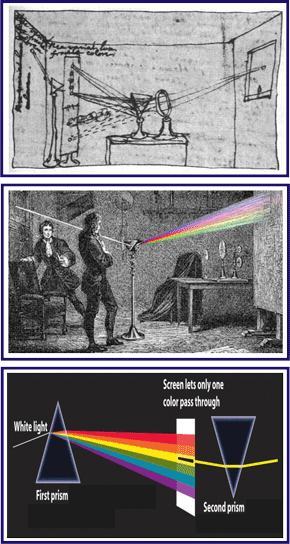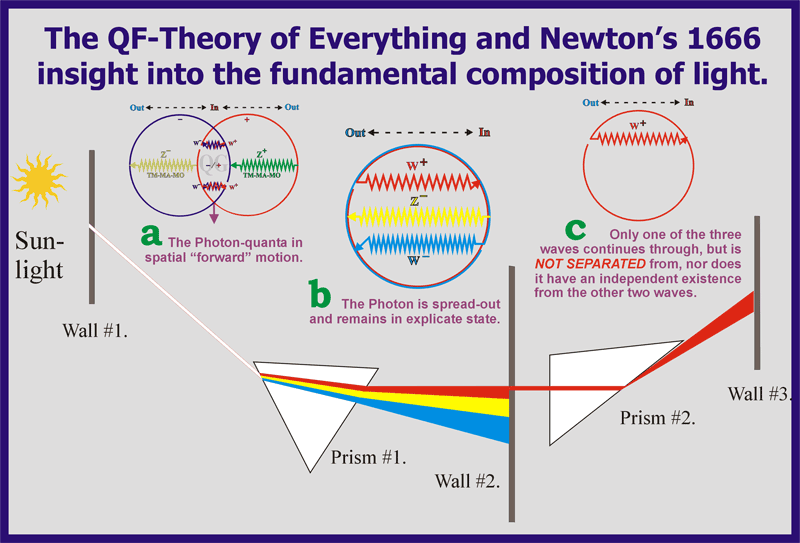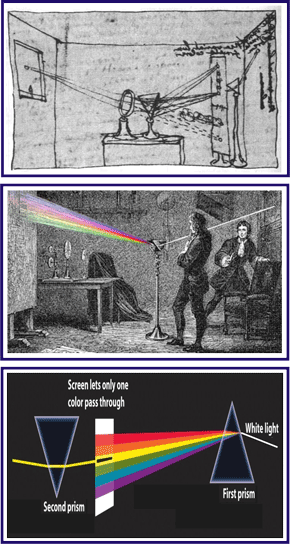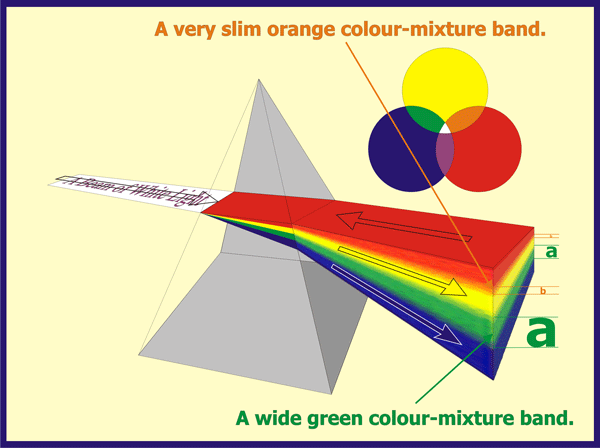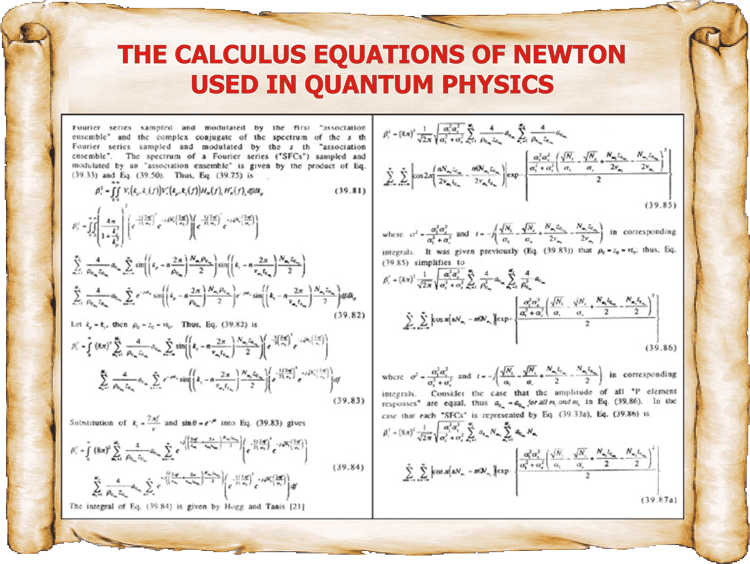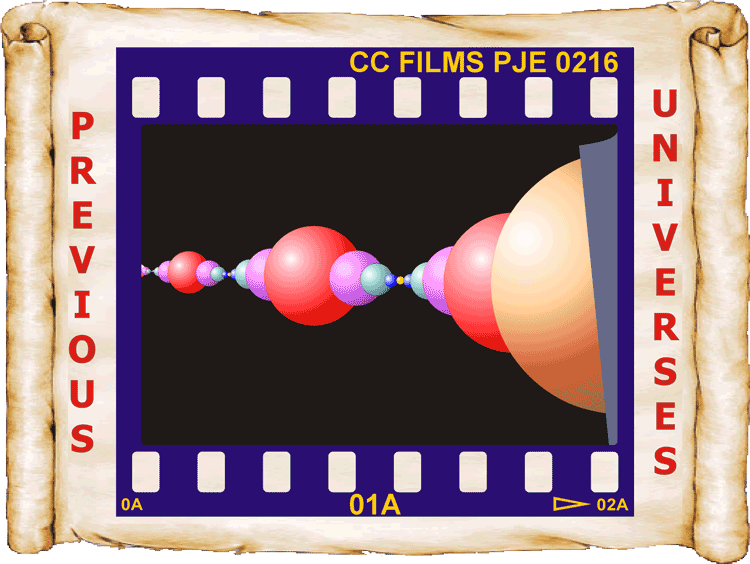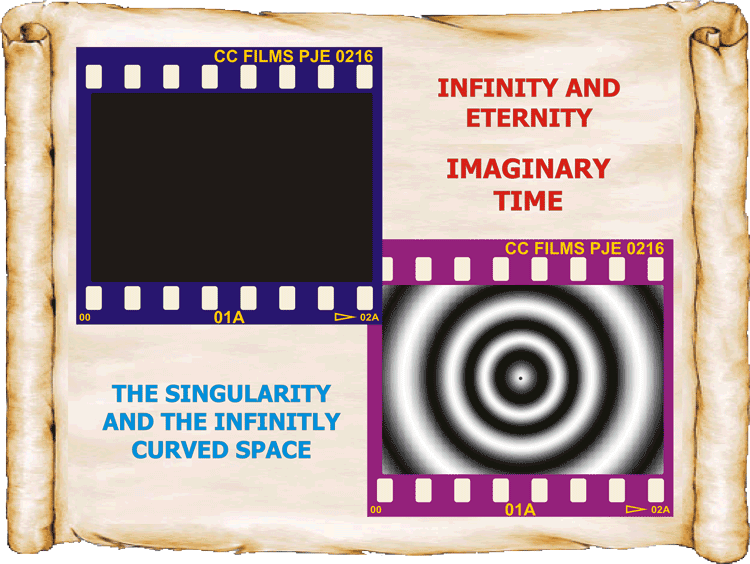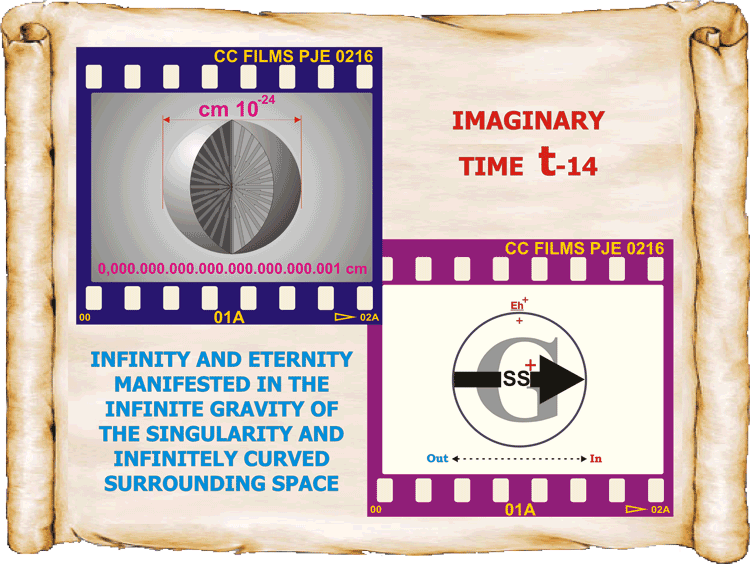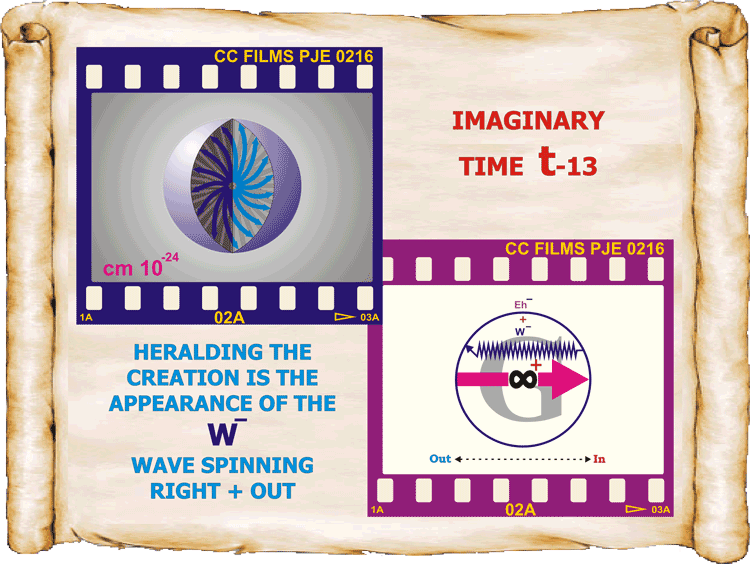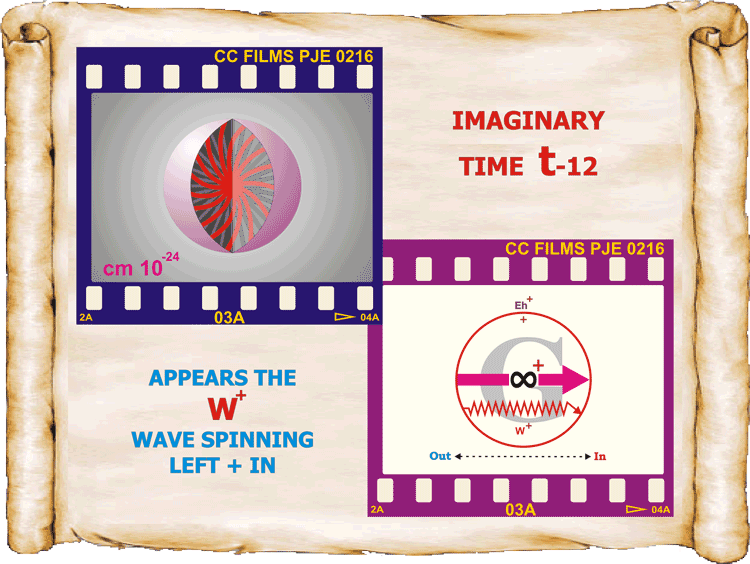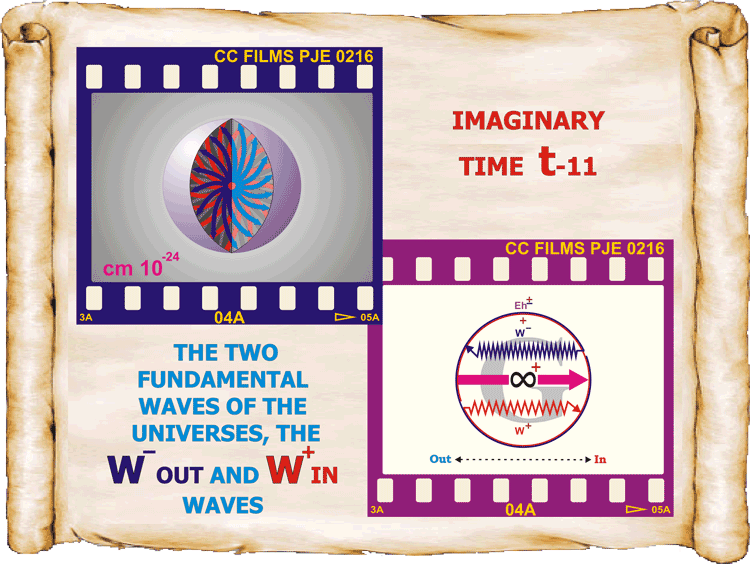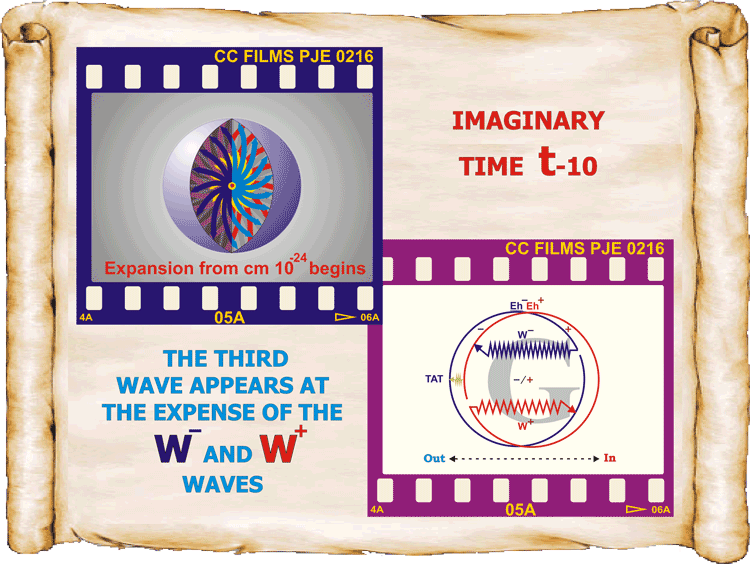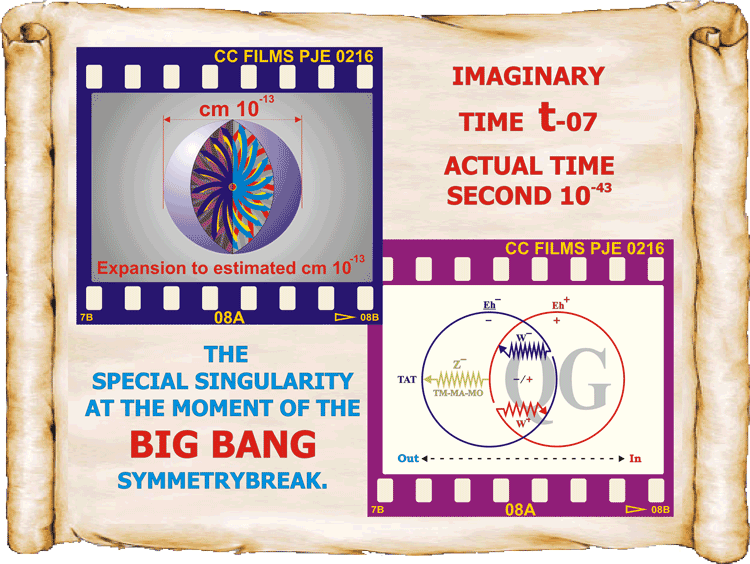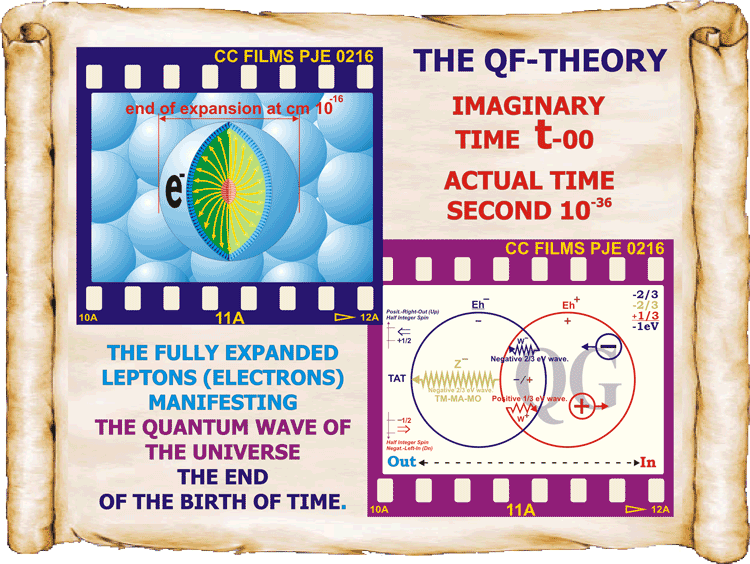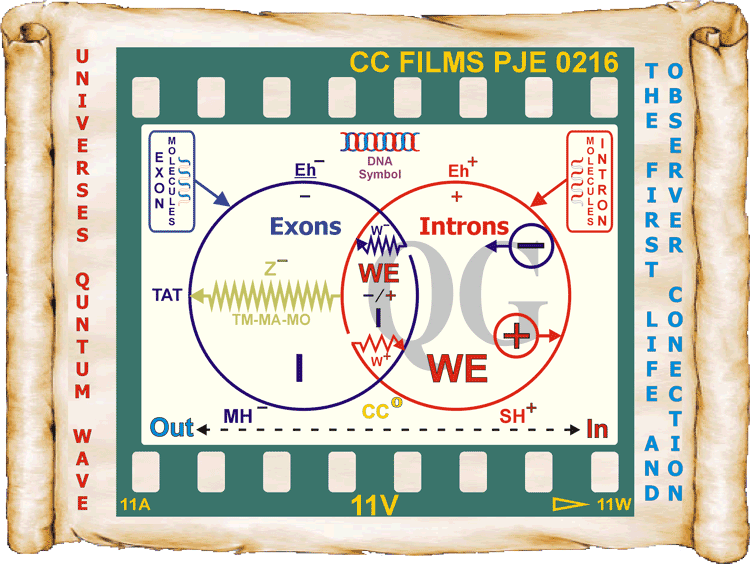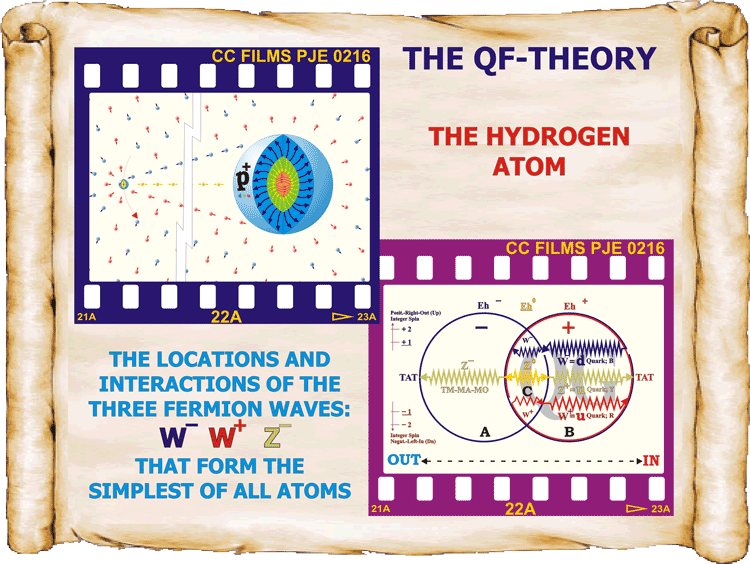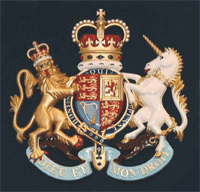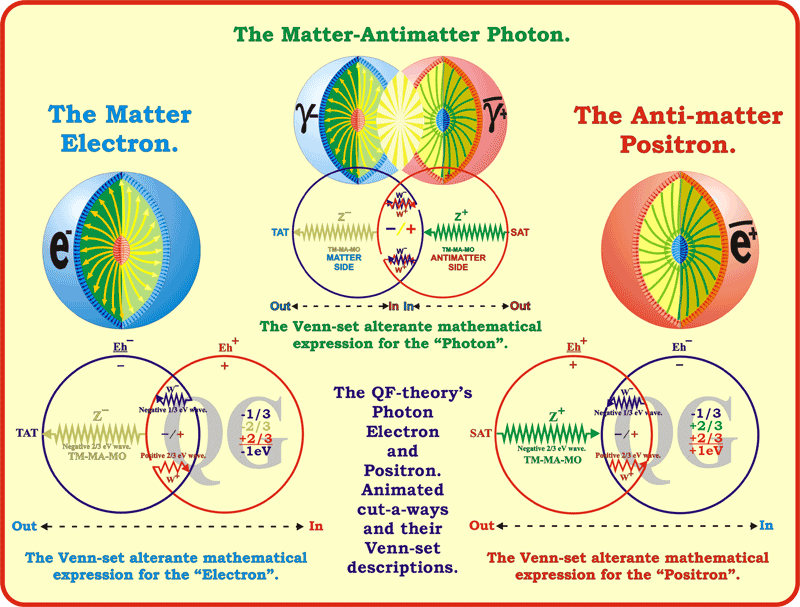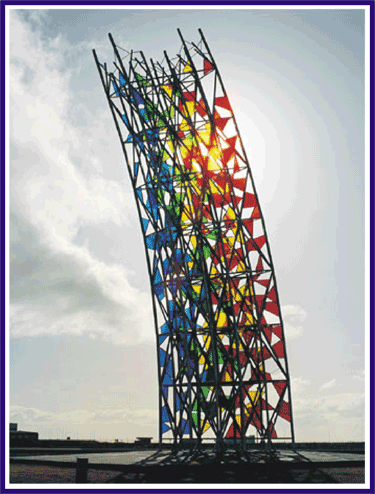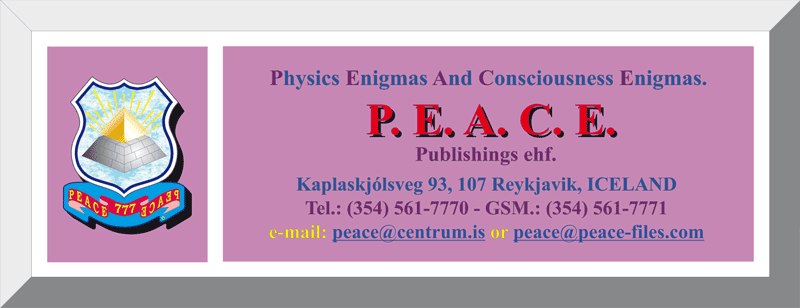The lesser known Side
of the Genious of Sir Isaac Newton?
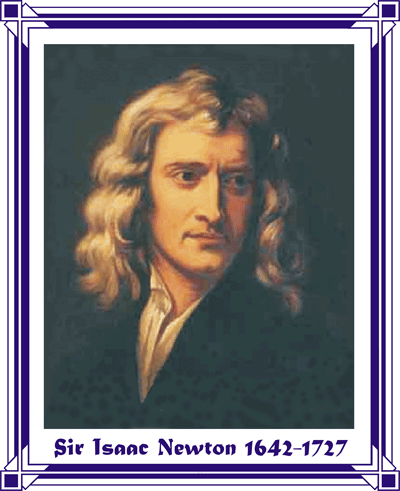
Sir Isaac Newton, the renowned
nature-philosopher, who was born at Woolsthorpe
Manor in Lincolnshire 4. January 1642, was better known for his great
contribution to the advancement of scientific knowledge of man, rather
than his efforts in the spiritual, mystical and alchemical field of
investigation and his search for the „grandiose all
embracing recipe"
which he believed to be the central theme of the Universe.
Until in
recent times the biographers of Newton have been inclined to omit this
part of his works believing that public knowledge of its existence
might throw a shadow on the reputation of this magnificent scientist.
The biographers have tended to avoid all
mention of the great treasure of his writings regarding the spiritual, mystical and
none-scientific material where the theology alone includes 416
papers.
The family of the Earl of
Portsmouth had inherited from Newton's
step-nice, a collection of scientific and other
writings of Newton. The family then gave this to the library of
the Cambridge
University with the stipulation
that all the none-scientific material be returned to the family.
Sale
of the spiritual,
mystical and none-scientific papers of Newton.
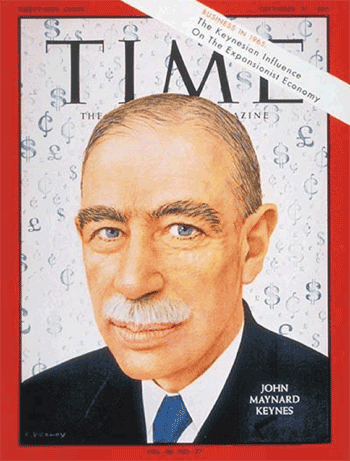 In 1936 the Portsmouth family then
offered the manuscripts for sale at an auction where the renowned
British economist, John Maynard Keynes (1883-1946) bought most of them.
In 1936 the Portsmouth family then
offered the manuscripts for sale at an auction where the renowned
British economist, John Maynard Keynes (1883-1946) bought most of them.
Posterity
owes Keynes
great debt for having saved this material, but he had become
rapturous by its contents, but amongst other remarks he had this to say
about it: „I suspect that
Newton's experiments were always made for confirmation of what he
already knew, rather than for discovery of new truth“. Keynes had much
doubt regarding the common nineteenth century opinion of Newton as; "the first and greatest
amongst the scientists of modern times; a rationalist which taught us
to think with cold and colorless logic“.
Keynes, who himself was a gifted
and creative thinker, saw Newton as "the
last of the magicians, the
last of the Babylonians and Sumerians, the last great mind which looked
out on
the visible and intellectual world with the same eyes as those who
began to
build our intellectual inheritance rather less than 10,000 years ago."
In his 1930 PSYCHOLOGY AND LITERATURE, Carl Gustaf Jung
describes most eloquently the quantum-neurological reality of the
artists brain
functions; “The artist is not a
person endowed with free will who seeks
his own ends, but one who allows art to realize its purposes through
him. As a
human being he may have moods and a will and personal aims, but as an
artist he
is 'man' in a higher sense - he is 'collective man,' a vehicle and
molder of
the unconscious psychic life of mankind.” These analyses have the same
application and scope of validity for the scientist in his initial
insight.
This is verified in the transcended spiritual experience as describe by
Albert
Einstein; “The most beautiful
experience we can have is the mysterious.
It is the fundamental emotion which stands at the cradle of the true
art and
true science.”
The ironical or cynica view Newton gave
the world of himself.
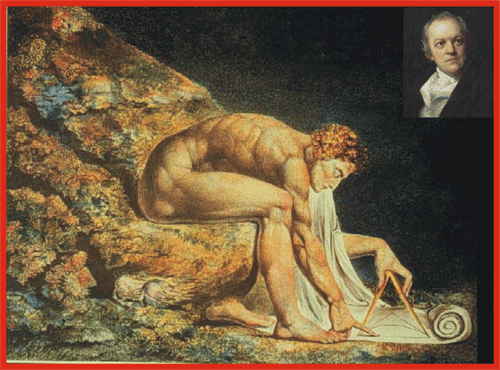 William
Blake and his
Newton
William
Blake and his
Newton
The impression Newton gave the world of
himself was of an observer who looked at the world and its composition
as a riddle; whose secrete could be unraveled by applying sober thought
to certain facts, certain keys which were hidden in various places in
nature. Nature could be seen as offering a sort of treasure hunt for
the natural philosophers. This side of Newton was
precisely the one that the English poet, mystic, painter and
graphic-artist William
Blake (1757-1827),
lamented so much and used as a symbol for the mechanical thinking —
the materialism — which was growing in England; ready to swallow the
spiritual views to nature, which a long procession of ancient
philosophers had subscribed to. Since Blake had no
knowledge of the spiritual writings of Newton, he came to the
conclusion that his mechanical view to the world and the universe had
left God out, the inner man and life itself. He thus believed that
Newton had shun all the values that made life worth living and we may
ask; What
would
Blake have said had he been given an insight into the mystical side of
Newtons philosophy?
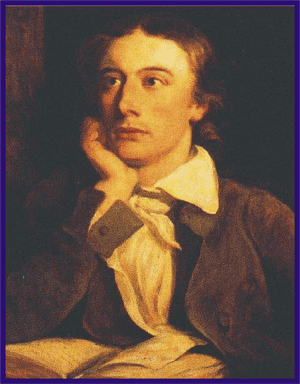 John
Keaths and his
Newton
John
Keaths and his
Newton
The romantic English poet, John Keats (1795-1821) maintained in
his young years that Newton had "unweaving the rainbow" by cutting it into
the colors that the prism produced.
That he had by explaining the composition of the rainbow, robed it of
its beauty. „Far from
it!“ says the
controversial Richard Dawkins; „Newton's unweaving is
the key to much of modern astronomy and to the breathtaking poetry of
modern cosmology. Mysteries don't lose their poetry because they are
solved: the solution often is more beautiful than the puzzle,
uncovering deeper mystery." Through his
„rainbow unweaving“ Newton showed us the truth in the
rainbow, but according to the
high spirited and renowned prose of Keats himself; “truth is beauty, beauty is truth”
then the rainbow unweaving is equivalent to the exposure of pure beauty.
Rejecting
the duality of
spirit and matter arising from the thought of Descartes, Newton
reached back to the views of the Pythagorean brotherhood regarding the
material
cosmos as modelled on mathematical lines such as geometry. He
understood well
their doctrines, and these included more than mathematics: the harmony
of the
spheres arising from the Pythagorean theory of music and sound.
For Newton, the
precision he discerned in nature
was not merely the outcome of laws in mathematics or physics that
originated in
chance conditions, but rather the indication of the work of a vast,
cosmos-spanning Intelligence he called God -- meaning by this something
quite
different from the view commonly held in his day.
In his
mathematical and
scientific work he opened up for consideration a majestic theorem that
embraced
the fall of an apple or stone, the tides of the seas, the planetary
orbits and
those of moons, the coming and going of comets, and the "brilliant,
stately motion of the canopy of stars." His remarkable intellectual
achievements need no detailed retelling here; from his early twenties
-- the "miraculous
years" -- he had already established the elements of differential
calculus (1665), and integral
calculus (1666), following with his
invention of the reflecting telescope. His Principia Mathematica was
published when he was 45, dealing among other things with universal
gravitation, a subject inspired by Jacob Boehme's phrase that
"attraction
is the first property of Nature." The Principia laid the
foundation
of scientific thinking that prevailed until this century when his laws
were
subsumed into the more widely-embracing relativity theory of Einstein.
His work Opticks (1704)
dealt
with the properties of light: proposing its
corpuscular form -- i.e., consisting of particles sent off in all
directions as
emanations from luminous bodies.
To many science was the religion of Newton since he saw
God in everything and Biblical reading was his favorite subject to the
same degree as his science. He did not lean towards any specific
religion but was attracted to the doctrinal interpretations of the Unitarian Church of England which was banned by the king for a time.
His objection to the doctrin of the holy trinity which he saw as
blasphemy, is believed to be the reason why he turned down a post as
the rector of Trinity College since it required him to be babtised into
the Episopal Church of England, which was Trinitarian.
The God-reality and
the Creation-realty ideas of Newton.
What has
not been generally
known is that the collection of Newton's
papers and books held in the Cambridge University Library includes an
enormous
amount of material dealing with theological, philosophical, and
alchemical
topics. His interest in alchemy is assumed to have arisen from his
attempts to
penetrate into the core of the chemical elements, whereas his
reflections on
the composition of mineral and other atoms and their transmutation one
into
another reveal his search for the heart of "original Matter" as a
link with the all-pervading divine essence.
Newton
interpreted the divine Unity as IT, without predicates, and as the
sustaining
energy and intelligence of the entire cosmos, initiating every process
and
phenomenon. His view of divinity pervading the universe is remarkably
like the
modern idea of God as the Urgrund, the "original ground" or
foundation of all life forms.
In
this he adopted Henry More's concept of space as infinite in which, or
out of
which, come all finite manifestations. H. P. Blavatsky in her Secret
Doctrine (1888) expresses a like concept of Space as the
ever-fecund mother
of universes and their inhabitants. Newton's Principia Mathematica similarly
distinguishes between time as
such and
endless duration -- "a work of science to be sure, but of science
steeped
in profound religious overtones" [cf. Christianson, p. 247].
Whilst a student at
Cambridge, under the heading "Of Atomes," Newton commented on Henry
More's The Immortality of the Soul, which ties in the
"pre-existence of the soul" with other relevant topics. Dr. More was
an influential contact for the younger man. A renowned Cambridge
Platonist and
an Anglican clergyman who had declined two bishoprics, More was
regarded as the
outstanding Cambridge
intellect of his day. Both men had associations not only through Cambridge University
but also going further back to Grantham where Newton had had his schooling.
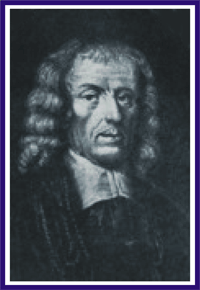 |
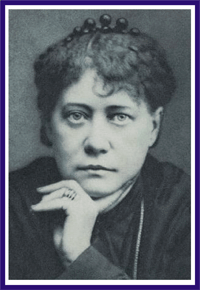 |
| Henry
Mores |
H. P.
Blavatsky |
The endeavors of the scientists at the
leading edge of science, primarily in theoretical physics, have now
recognized the need for the inclusion of the observer int their work,
in particular after the collapse of the Superstring Theorizations. A
major part of this inclusion of the observer is the requirement for a
comprehensive explaination for consciousness, but that in turn has
raised the demands for the explanations for the spiritual, religious
and mystical experiences of man, which obviously demands a
comprehensive explainations for the human brain and its functions,
including all its malfunctions. The spiritual, religious and mystical
experiences of man
was also the foundation of all scientific thinking of Newton, as he
recognized that we would never understand the world without
understanding our selves, but this is the lesser understood side of his
thinking.
Amongst the
spiritual papers and books of Newton which John
Maynard Keynes bought at the auction was to be found voluminous
material, not just regarding mysticism, alchemy, but the prophesies of
the Bible as well, this including twenty
different versions of the Book of Revelations and a restored version of the Hebraic
text of the floor plan of the Temple in Jerusalem, which Newton saw as
a "symbol
for the organization of the world." Only
one of Newton's book on Biblical matters was ever published in 1733, 6
years after his death, but it was:
OBSERVATIONS
UPON THE PROPHECIES OF DANIEL
AND THE
APOCALYPSE OF ST. JOHN
Newton's main research regarding the Book
of Daniel began when he was only 12 years old and continued to hold a
special place amongst his interests all his life. He wrote about
prophesies in general and expressed in great humility that he himself
had carried special reverence for the prophesies he had been allowed to
read. He made the greatest effort on the prophesy in the Book of
Revelation but had to admit himself as failure at its understanding its
contents and admitted that it confounded him. Eventually he came to the
conclusion that the book was intended for only very few individuals to
understand until the end of the world was approaching: the time of the
highest judgment approaching and the eternal kingdom of the saints
beginning to manifest, but at that time people would appear who could
understand the prophesy.
In his late theological
paper Irenicum: or
ecclesiastical polity tending to peace, Newton stated
during a chronological treatment of the history of the Church as
originating
from Judaism, that "all
nations were originally of one religion" and,
further, that "the
two great commandments of this primitive religion were
profoundly simple: to love God and to love one's neighbor as oneself".
Today many
are of the opinion that if Newton's
hidden interests had been widely
known in the seventeenth and eighteenth centuries, we in the twentieth
would
have inherited a blurred portrait of a heretic and if the general
public had been given access to his work, he might even have been
murdered by some religious fanatic.
Certainly,
we would not
have been given the general impression that is current -- the archetype
of the
scientific, supremely rational mind interested only in physical matter
because
there is nothing else! Newton
appears to have belonged to that rare breed of seminal thinkers who
inject into
the thought-atmosphere of humanity seeds that germinate in their own
time when
the conditions are right, to effect great changes.
Newton
kept the chair of the Lucasian Professor in Mathematics in Cambridge
University for 33 years, but in 1699 was made “The Master of the Mint” or put in charge of the king's
money production. He was a parliamentarian for Cambridge
University in the House of Parliament and elected the president of the
Royal Society;
a post which he held for 24 years. He was knighted in 1705, lived until
eighty five and was berried in Westminster Abbey where Burnet bishop
described him as:
"the
cleanest soul I have ever known.”
In the years 2002-3
the BLAKEWAY
PRODUCTIONS created a documentary for BBC and WBGH
BOSTON, where the story of the mystical side of Sir
Isaacs is told, but it carries the title ISAAC NEWTON -
REJECTOR OF
THE TRINITY BELIEVER IN ONE GOD but in it Sir Isaac is titled NEWTON, THE DARK
HERETIC, but here the reference to
him being a "heretic"
is owing to his refusal to believe in the holy trinity. This hour long
documentary may be viewed on the (can be viewed in full screen) and is found at the URL:
After the
papers of Newton had been published and his religious,
mystical, spiritual and alchemical side became known, many began to see
his strong religious leanings as
an endorsement of the divine by a powerful intellect. On the other hand
the skeptics saw Newton as someone who had though so hard that he had
cracked and become a delusional nut-case. What the questions
regarding the psychology and the inner life of Newton concerns, then
there are not many who realize that his thinking processes will not be
comprehensively understood and a conclusive accesments made of them
before man has final and conclusive solution to the riddle of the human
brain, but still much is missing in order for this function will be
fully understood. This in particular around the function of the spatial
hemisphere since the enigmas are there the most numerous, mostly
around the insight-
and creative-intelligence
faculties, but they are housed in this part of the brain. Newton--who
soon realized that all the "why"
explanations were missing in his "how"
explanations for gravity--had the grand
dream of solving the riddle of creation and the universe.
Newton, who
was famous for being absent minded and possibly the father image for
the absentminded professor, was in a continuous conversation with "God"
in his mind and here it is believed that his "Jamais
vu - faith and creativity faculty"--which is at the same time "the cosmic and the
collective field" in his brain--was fully functional and he thus
in a "conscious
contact with the creation reality, or God". This is a brain
function which is not generally experienced by modern man and thus a
very limited understanding of its functions are available, but it may
be understood in different terms if viewed with reference to Newton's
contemporary collective consciousness. Newton was thus truly; In the Presence of the
Creator, but the insight and
creativity abilities here discussed are exclusively those who produce
the fundamental discoveries regarding the laws of nature, not the
developmental discoveries which ensue from them. Little doubt is that
Newton was constantly asking "God
for the answers to the riddles he wrestled with, but he could of course
not know that most of them were what we to-day know as being of quantum
mechanical nature.
Here the "God", or "creation-reality",
answered him to a great extent through symbolic visualizations and thus
no wonder that he had the idea that the floor plan of the Temple in
Jerusalem contained the key to the creation mystery and that of the
material world would be found in the alchemy, but he sometimes worked
18 hours a day on his alchemical experiments. What
has not been generally known is that the collection of Newton's papers
and books held in the
Cambridge University Library includes an enormous amount of material
dealing
with theological, philosophical, and alchemical topics. His interest in
alchemy
is assumed to have arisen from his attempts to penetrate into the core
of the
chemical elements, whereas his reflections on the composition of
mineral and
other atoms and their transmutation one into another reveal his search
for the
heart of "original Matter" as a link with the all-pervading divine
essence. The alchemy that
eventually presents us with the answers to the riddle of the
composition of the material world,
does not appear until 300 years after this intensive search by Newton,
when Herr
Professor Max Karl
Ernest Ludwig Planck, on the 14th of December 1900 introduces to
the Keiserliche Deutsche Science
Academy his ideas regarding the "quantum composition"
of energy. To-day we can metaphorically look at Quantum
Mechanics as the contemporary "Lapis Philosophorium" or "Alchemy" and the search for the Unification
Theory of Everything as the
"Floor
plan of the Temple in Jerusalem".
Newton may very likely have been trying to force out some insights,
which in his day were still far in posterity, and which requires
knowledge of a series of multiple complex discoveries before it is
possible to achieve them. Here it is further likely that the functions of the
spatial hemisphere were giving him the
replies from the "God-reality", the "Creation-reality"
or the "Cosmic
Consciousness" without him being capable of understanding them
due to the
lack of the future knowledge of science.
Many of those who later are given insight into Newtons thinking 300
years ago are obviously incapable of comprehending their causes and
circumstances,
whether it be in the light of the prevailing contemporary thinking or
the generally limited knowledge of the times, but Newton himself seems
to have been well aware of this. For this reason he arranged his
affairs so that the parts of his work which could not be commonly
understood were only limited available to the public while he
lived as is see in the case of his OBSERVATIONS
UPON THE PROPHECIES OF DANIEL AND THE
APOCALYPSE OF ST. JOHN were not published
until 6 years after his death.
"I
was like a boy
playing on the sea-shore, and diverting myself now and then finding a
smoother
pebble
or a prettier shell than ordinary, whilst the great ocean of truth lay
all undiscovered before me."
Quotation
from:
Sir Isaac Newton
Since
the documents, which are a part of this lecture and its fractional
biographical discussion, came into the public view after the middle of
the twentieth century, the interest of scollars and thinkers for the
spiritual side of Newtons interests, had steadily grown.
In this the book by Gale E. Christianson from 1984 and the BBC
documentary from 2003 two of the fruits that have come out of the
research this interest has prompted. Many have thought much about, and
tryed hard to understand, this man, Newton, who had already become
magnificently grand before his spiritual and alchemical interests were
known. To them Newton
either grows or schrinks at the reading of his hidden papers, but many
of those who succeed in adjustinmg themselfs to the contemporary spirit
that prevailed in Newton's day see him as an even grander wonder and
more magnificient than his contemproaries and later admirers had
realised. We now turn to the later part of this lecture:
The Rainbow
Phenomena in the Mind of Newton.
"There are works
which wait, and which
one does not understand for a long time; the reason is that they bring
answers
to questions which have not yet been raised; for the question often
arrives a
terribly long time after the answer."
Quotation
from:
Oscar Wild
Newton's Search for the Recipe of the Universe or the Theory
of Everything.
The suggestions that Newtons search for
the “Lapis Philosophorium”
represented his search for the Complete Unification Theory that
included the Theory of Everything, explains his constant talking to God
within himself and
that this made him appear as
an absent
minded science genius. When
he took his dinner plate in the university's canteen and brought it to
his table and then walked out continuing his discussion with the voice
in his spatial hemispheric subconscious, he is very much in agreement
with the QF-theory's
brain model explanations for the thinking of the creative genius. This
he himself verifies in his suggestion that: "No great discovery
was ever made without a bold guess!" , but here the "guess" is
the "idea" (in deus) that is coming into his consciousness from the Jamais
vu creation reality. This also agrees with the observation of Keynes when he said: "I
suspect that Newton's
experiments
were always a means of verifying what he already knew, rather than a
means of discovering new truths." Newton's genius insights into nature,
came through his dialog
with the creator
of nature, where he presented his observations of nature in
the form of questions and then abandoning the search once he had
presented the question surrendering himself and the answer to the
creative reality. The answer would then pop into his head when he least
expected it, verifying the claim that all answers are already in our
head, the question is just one of the access. This is very likely to
have been his method already prior to him reaching the
summit of his insights when he was 24 years old, which he later
described in his renowned humility by saying; "If I have seen farther
than others, it
is because I was standing on the shoulders of giants!"
and through this humbles himself while
recognizing the preparatory work by others.

Newton
on the top; "anni mirabiles", or
the "year of miracles" in 1666.
The time period when Newton is on the
sumit of his insights the Black Death epidemic raged across Europe not
sparing London in the years from 1664-1667 and Newton,which was 22 to
25 years old student in Trinity College Cambridge, sought an asylum
shelter at his Woolsthorpe Manor farm in
Lincolnshire. The plague then finaly began subsiding after the Great
Fire of London in 1666.
When Newton arrived at Woolsthorpe
Manor he was on a "Black
Death school-vacation" and could now turn to his most pressing
subjects of interest, but here we suspect that he had already“accepted his ideas” and all he needed to do was to execute
his confirming physical experiments where applicable--as Keynes
suggested--and carry out his mathematical exercises where applicable for confirmation of his ideas. There he
discovers the“binomial
theorem”, “fluxation
method”,, the “three laws of motion” (inertia) but included in this is his
creation of the “calculus
mathematics” which is a part of his grandest discovery; “the laws of gravity”.. The same year he carries out his famous
prism experiments and through it proves the composition of white light
from three different colored light waves an by this refutes the so
called “Modification
Theory of
Light”, but the conclusions of this experiment
became the first verification for the simplistic QF-theory.
THE
MEMORIAL FOR THE 1666 FIRE OF LONDON AND NEWTON'S HOME, WOOLSTHORP
MANOR
The modification theory had maintained
that the prism modified the
appearance of the homogeneous white light so as to produce the colors.
Newton's experiment proved that the light is composed from three
different colors which through the properties of the prism are spread
out but were not created through it. It would take 15 years before the
academy agreed that this was the truth of the matter, but before he had
been accused of stealing the ideas from others and even for high
treason in connection with this discovery. It was the then siting
president of the academia which opposed him the most.
Here we have
some graphics that show the story and the experiment which Newton
carried out to investigate the truth in his ideas regarding composition
of light from three fundamental-colors. Above the center
graphic description of the experiment is the Venn-logic graphic showing
the the composition of light at each stage of the experiment.
Newton's refutation of
the "Modification Theory" trhough the Prism Experiment
The Magnificient
Dream of Newton and his Discovery Methodology.
The central focus of this
story is the fact that when Newton had made his two grand discoveries
regarding gravity and the composition of light, he had become the first
and foremost witness in the search for the Theory
of Everything. He had
become aware of this and consequently had hoped that he would succeed
with his method to find the final answer although this dream of his did
not become known until after his death and the publications of his
documents. Newton may be
described as being enraptured with the beauty and simplicity of his
discoveries, but he was well aware of the fact that they were only "how"
discoveries without the "why"
explanations which were needed for it to represent a Complete Unified Theory.
With his discoveries Newton
never the less placed the cornerstone for the efforts of modern physics
to prove the logical necessity for the existence of the Universe as we
are experiencing it. Here it
is not the physicists decelerations concerning their progression which
is the purpose of their work but the dream of Newton, which was and is,
the ultimate goal of physics. The guidepost to that goal--say the
physicists--is the "beauty
in their equations"; which express the rational consistency in
nature; beauty, however, according to Shakespeare and Hume, has to do with being
in the "eye of
the observer."
In this quest
of Newton for the final goal, his prime advantages over others,
was his method of asking the Creation Realty for the answers and his
his unique ability to ask the right questions and formulate them
focused on their core. Here he asked what was behind gravity in its
Universal function of spreading instantaneously allover space and how
it interacted with the mass in the matter. His equations only showed
how gravity behaved but not what was behind this all-effecting force,
which appeared so subtle, or weak. The other question was not less
profound, although
it was very simple. It concerned the conclusion that
light was constructed from three fundamental colors or; What was it in
nature that demanded that the fundamental colors be only three? Why not
2, 5, 7, 12
or any other number?
What further
raised his interest was the explanation for the reason why the colors
that appeared in the prism were four, as in the rainbow; Red, Yellow, Green and Blue where it was known
that one could not mix any colors together and obtain Read or Yellow, or Blue and they therefor seen as the
fundamental colors, while Green on the other hand was
a mixture of
Yellow and Blue, and the Green band in the rainbow thus color-mixture. His took Newton to the question; Why then is there no
wide color-mixture band in Orange,
between the Red
and the Yellow bands in the rainbow
and the prism?
The
three arrows in the prism colors express the quantum-wave
spin-direction of the three quantum
waves that are the inner structure of all matter particles (Leptons and
Baryons of the Fermions)
and exclusively the photon in the energy particles (Boson) according to the QF-theory.
These questions shot back and fourth in
the consciousness of Newton for many years but he had from th onset
been employing his previously described“riddle
solution method” on
them. What Newton did of course not know when he directed the light
beam
through the prism and looked at the three fundamental colors, that he
was carrying out one of the simplest quantum experiment possible, which
at the same time is one of the most fundamental quantum experiment
thinkable. Although he knew how to ask the right questions but his
perfect “riddle
solution method” on
failed since much scientific knowledge was still lacking for this, or
any other, method to work. Newton,
who looked on the whole universe and all
that is in it as a riddle, as a secret which could be read by
applying
pure thought to certain evidence, certain mystic clues which God had
hid about
the world to allow a sort of philosopher's treasure hunt. Here he
needed certain facts that were missing, but the replies from the
creation reality must have been suggesting that; The time is
not ripe for these answers. The time for the answers will come at the
time when the prophesy of the Book of Revelation manifests. It is thus no wonder that
Keynes had found 20 different versions of the book of revelation in the
Newton papers. What is here missing is obviously the discovery and
development of the quantum theory which takes place in the first 30
years of the twentieth century, as well as the relativity's theories of
Einstein which appear during this period. It is
then the General Theory of Relativity (1915) of Einstein which produces
the answer to half of Newton's first question, but science is still
missing the final answer to explain what it is in the matter particles
which produce the curvature of space and through that, gravity.
As regards the twofold question
concerning the prism and the rainbow,
then the science world is still at a loss for the explanations in spit
of the New
Physics which will
eventually produce the answer. What stops physics from producing
the answer is the fact that its mathematics are incapable of connecting
quantum mechanics and general relativity through mathematics. This is
where science becomes bogged down in its quest for the Theory of Everything that includes the observer. This
discovery was what Newton thought he would find in the „Lapis Philosophorium“ which he secretly sought.
The
answer to Newtons question regarding the Green mixed-color in the prism experiment and
in the rainbow are at the same time the final answer regarding the
composition of all matter particles, plus the photon. Such an answer
cannot be achieved without the explanation for the connection between
matter and space, which is at the same time the answer to the riddle of
the connection between quantum mechanics and general relativity and
thus the final answer to the last part of the riddle of gravity. That
answer will thus be the key to the long sought after Complete Unification
Theory of physics and the Theory of Everything,
since it will contain the organization of the DNA-molecule, Life and the Consciousness of the
Observer. Obviously it will also contain the final mystery of
the rainbow.
The most remarkable in all this is the God-consciousness
question technique of Newton and his awareness that the ultimate
answerers for the Universe
and Life
where to be found. He knew that the ultimate answer's were only to be
had from the God-consciousness
that was found within man himself and which had been promised by the
creator through the Book of Revelation Chapter 10, verse 7; "But in the days of
the voice of the seventh angel, when he shall begin to sound, the
mystery of God should be finished, as he hath declared to his servants
the prophets." Newton is thus teaching us through his
300 year old mystical writings how we must approach the non
mathematically resolvable riddles of nature. Th question is; Are we humble enough to accept his wisdom so we may become capable of understanding what he is
teaching us.
"No
great discovery was ever made without a bold guess."
Quotation
from:
Sir Isaac Newton
WHAT HAS THE QF-THEORY TO SAY ABOUT ALL THIS;
DOES IT NOT CLAIM TO HAVE THE ANSWER TO EVERYTHING?
WHAT DOES THE QF-THEORY
SAY ABOUT NATURE'S FUNDAMENTAL COLORS?
WHY ARE THEY ONLY THREE? WHY IS THERE NOT AN EQUALLY WIDE ORANGE COLOR-
MIXTURE BAND AS THE GREEN COLOR-MIXTURE BAND, IN THE PRISM AND THE RAINBOW?
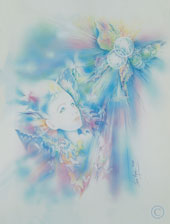
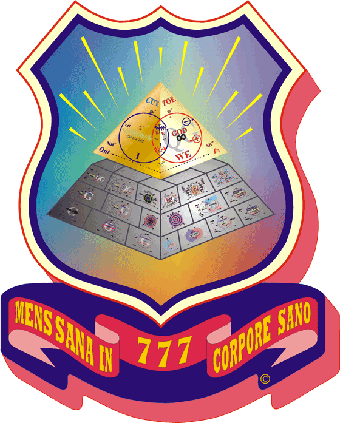 The
10th
The
10th






